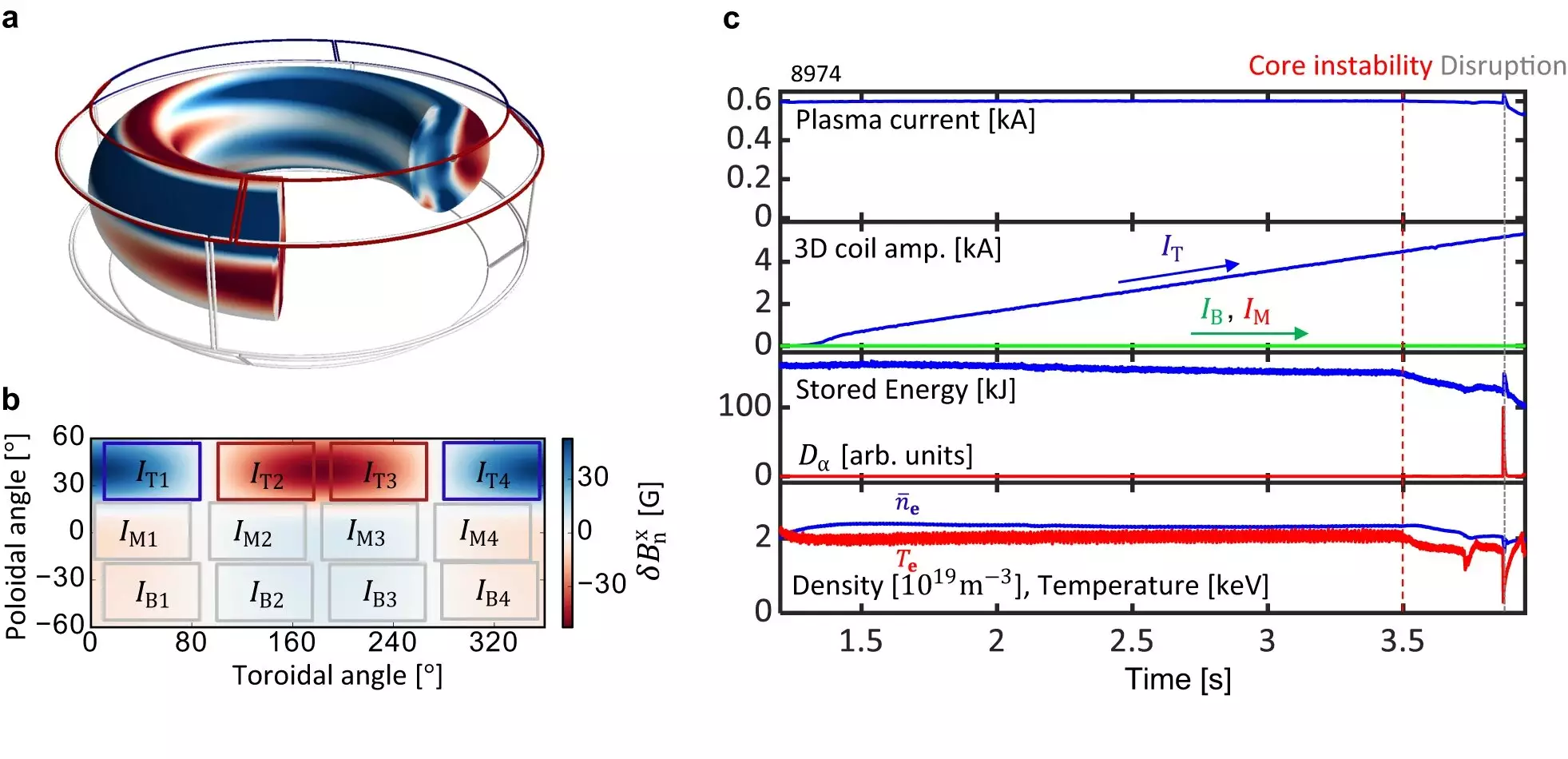In the realm of plasma physics, scientists have drawn inspiration from the ancient Japanese art of Kintsugi, where broken pottery is repaired with gold, creating a final product even more beautiful than the original. This metaphorical concept has led to a new approach to managing plasma, with researchers harnessing the imperfections in magnetic fields that confine the reaction to enhance the stability and performance of the plasma. This groundbreaking approach was detailed in a paper published in the journal Nature Communications.
Traditionally, magnetic field imperfections in devices like tokamaks, where plasma is housed, have been viewed as disruptive factors that can lead to plasma instabilities and hinder fusion reactions. However, the research team led by PPPL Physicist Seong-Moo Yang has now demonstrated a systematic method of utilizing these error fields to tailor the plasma for optimal stability, thereby enhancing its suitability for use as a power source. By identifying and implementing error field corrections, the researchers were able to enhance plasma stability under various conditions, which is a significant advancement in fusion research.
The innovative approach of adjusting error fields not only eliminated instabilities at the edge of the plasma but also maintained core stability, a critical aspect in achieving controlled fusion reactions for power generation. This breakthrough research marks a pivotal moment in bridging the gap between existing fusion technology and the future requirements for integrating fusion power into the electrical grid. The ability to simultaneously stabilize both the core and edge of the plasma represents a significant advancement in fusion research.
The implications of this research extend to the design of future tokamak fusion pilot plants, potentially enabling more efficient and reliable plasma management. The researchers are currently exploring the integration of artificial intelligence (AI) into their control system to enhance efficiency. By using AI, they aim to predict and control plasma behavior in real-time, ensuring optimal performance while protecting the fusion device. This integration of AI is seen as a critical step in advancing plasma control systems for future fusion reactors.
While the current research was conducted using internal magnetic coils within the fusion vessel, there is a suggestion to explore the use of external magnetic coils in future studies. This shift away from housing magnetic coils inside the vacuum-sealed vessel is motivated by the extreme heat of the plasma, which can potentially damage internal components. By utilizing magnetic coils outside of the vessel, researchers aim to create a more robust and efficient plasma confinement system that can withstand the challenges of fusion reactions.
The concept of embracing imperfections in magnetic fields for plasma management represents a paradigm shift in fusion research. By taking inspiration from the art of Kintsugi, researchers have unlocked new possibilities in enhancing plasma stability and performance. This innovative approach, coupled with the integration of artificial intelligence, holds promise for the future of fusion energy and paves the way for more efficient and reliable fusion power plants.


Leave a Reply